Two new polls came out Thursday.
Both show the same thing: Virginians don’t like President Donald Trump and want Democrat Abigail Spanberger to be their next governor.
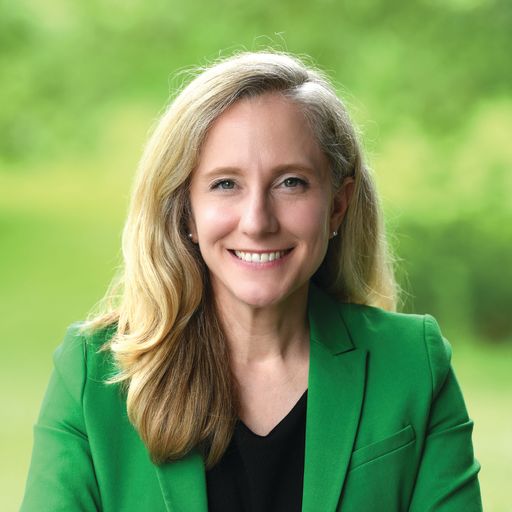
They do that in very different ways, though: A poll for the pro-business group Virginia FREE shows Spanberger leading Republican Winsome Earle-Sears by 4 percentage points. The Roanoke College poll, though, finds Spanberger leading by a staggering 17 percentage points.
The polls also differ in one key way: The Virginia FREE poll finds that most Virginians approve of the job that Republican Gov. Glenn Youngkin is doing. The Roanoke College poll finds, for the first time, that most Virginians now disapprove of Youngkin’s governorship.
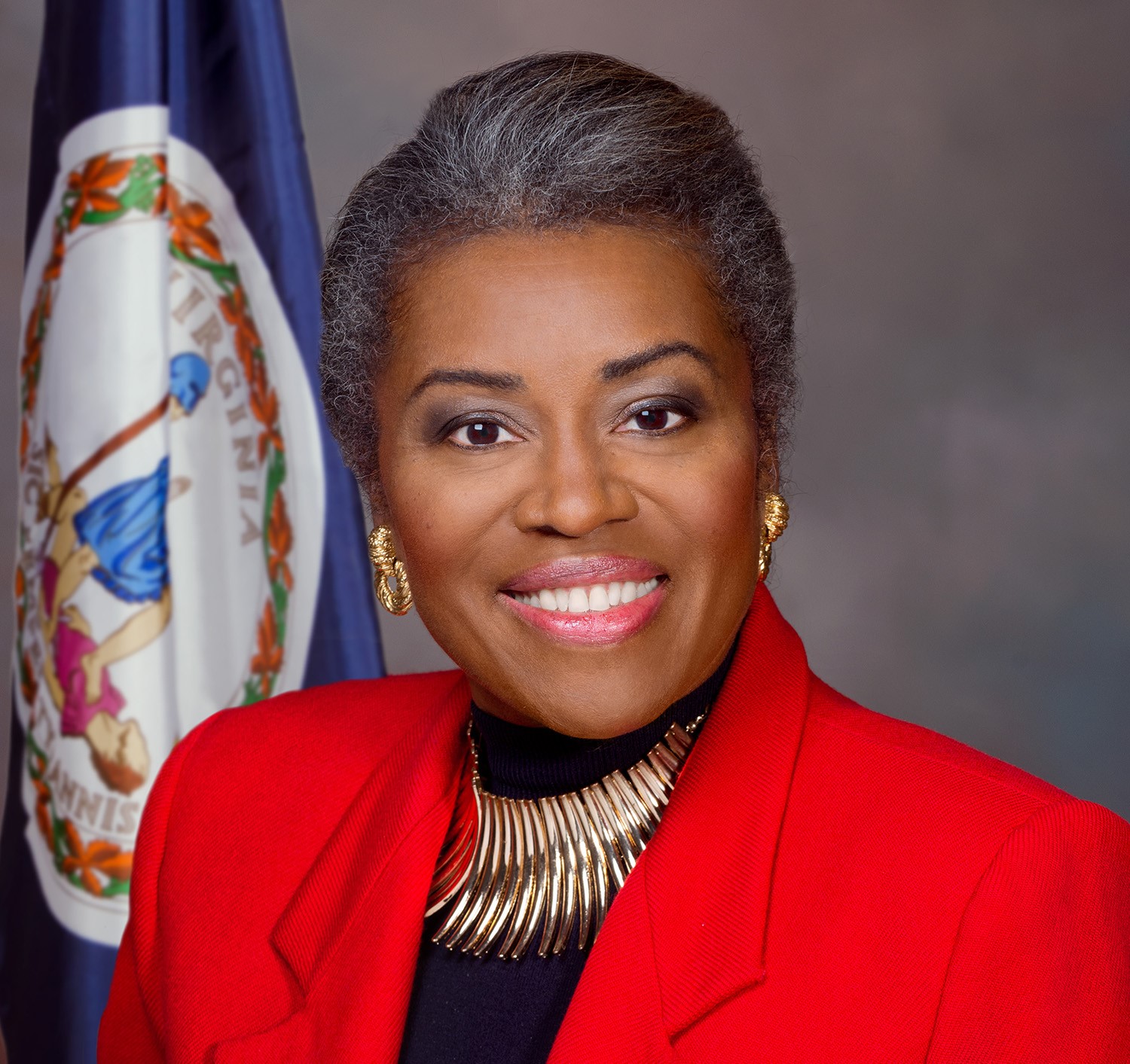
Why are the two polls so different in some key ways? It’s a matter of who was surveyed. The Roanoke College poll drew from registered voters. The Virginia FREE poll tried to filter its respondents down to likely voters, a smaller group. Since Spanberger has a bigger lead among the wider universe of registered voters and a smaller one among just those who are likely to cast ballots, the two polls together suggest that a lot of those Democratic supporters may like Spanberger but simply aren’t inclined to vote in an off-year election. Spanberger’s challenge will be to motivate them to do so; Earle-Sears’ challenge is to win over more supporters among the pool of regular voters that history shows are more likely to actually show up.
That means to some extent they need to talk to two different types of voters as the campaign progresses, which may help explain a lot of the different messaging you’ll see.
The difference between the samples doesn’t mean that one poll is “better” than another or that one is “wrong” and one is “right.” They are simply measuring two different, but overlapping, audiences. The closer we get to the election, the more the “likely” voters will matter, but it’s certainly useful to know what the general feelings of the potential electorate are. Ultimately, of course, the only opinions that matter belong to the people who actually show up to vote.
Here’s a closer look at both polls; you’ll find more discussion of the Roanoke College poll simply because there’s more data available about those results — and also a long history of Roanoke College polls back to the 1990s that lets us put those numbers in a historical context.
I realize for many people the key thing is simply the headline — who’s ahead in the governor’s race and by how much? You’ve already seen that above. Now let’s walk through the underlying factors that lead to Spanberger being ahead, even if there’s a wide variation in how much she might be ahead by. An advisory for any Republicans with blood pressure problems: This analysis starts off with a lot of bad signs for Republicans, but things eventually get better.
1. Virginians have never liked Trump, and they like him even less now

We begin with a basic fact: Virginia voters have rejected Trump in three straight presidential elections. That alone creates some dead weight for statewide Republican candidates in Virginia to carry. It’s notable that Youngkin and his two ticketmates won a majority four years ago — after Trump had left office. This year’s Republican ticket must try to win a majority with Trump in office — and Trump’s disapproval rate in the state rising to its highest level ever. Republican partisans love Trump, but the independent voters they need to win over do not. That’s the fundamental challenge for Republicans: Can they find a way to disassociate themselves from Trump without alienating their base?
The Roanoke College poll finds that 65% disapprove of Trump’s handling of the presidency. That’s higher than it’s ever been. The previous high was 59% in February, so Trump is becoming more unpopular in the state. For most of his term, Joe Biden was unpopular in Virginia, too, but never this unpopular.
Among the smaller universe of likely voters that Virginia FREE surveyed, Trump’s disapproval rate is lower — but still 56%.
The Virginia FREE poll doesn’t provide as many of the internal details as the Roanoke College poll does — the crosstabs, in polling lingo. That Roanoke College poll, though, has a telling detail: Independents don’t like Trump. Only 25% approve of the job he’s doing, leaving 75% either to disapprove or remain undecided (it’s unclear). Even in an era of growing political polarization, independents still matter, and their sour views on Trump make it hard for Republicans in Virginia to win them over this year.
2. For the first time, a majority of Virginians feel the state is on the wrong track
Roanoke College typically asks whether respondents feel the state and the country are on the right track or wrong track, because those feelings often explain how they feel about the candidate involved and why they intend to vote the way they do. One thing has been a constant in the eight years that Roanoke College has asked this question: Respondents have always felt the country was on the wrong track (no matter which party was in power), while the state was almost always on the right track (again, no matter which party was in power). Through the course of 28 polls over eight years, only twice has the Roanoke College poll found that more people thought Virginia was on the wrong track rather than the right one — and neither of those involved a majority. In August 2020 (with Trump in the White House and Democrat Ralph Northam in the governor’s office), 49% said wrong track, 45% said right track. In November 2022 (with Biden in the White House and Youngkin in the governor’s office), 48% said wrong track, 47% said right track. Otherwise, it’s always been the right track, with majorities ranging as high as 55%.
This time, though, something changed: For the first time, most of those surveyed said the state is now on the wrong track, too. A year ago, 53% thought the state was on the right track, 43% on the wrong track. This May, only 45% see the state on the right track while 51% say it’s on the wrong track.
What happened? The poll doesn’t say, but one logical explanation is that Trump is now president and the changes he’s set in motion, from federal government cutbacks to tariffs, are simply unpopular, particularly in a state that has a lot of federal workers. Trump’s first term did not seem to have any effect on the Virginia right track/wrong track figures, but Trump’s first term also didn’t involve widespread government layoffs and taxes on imports.
Whatever the cause of this change in mood is, it would seem to be bad news for Virginia Republicans. Their plan has been a “keep a good thing going” campaign to run on the record of the Youngkin administration. Persuading voters to focus on Youngkin and not Trump could be a good strategy, assuming voters feel good about Youngkin, which they have — up until now. That brings us to this:
3. For the first time, more Virginians disapprove of the job Youngkin’s doing than approve
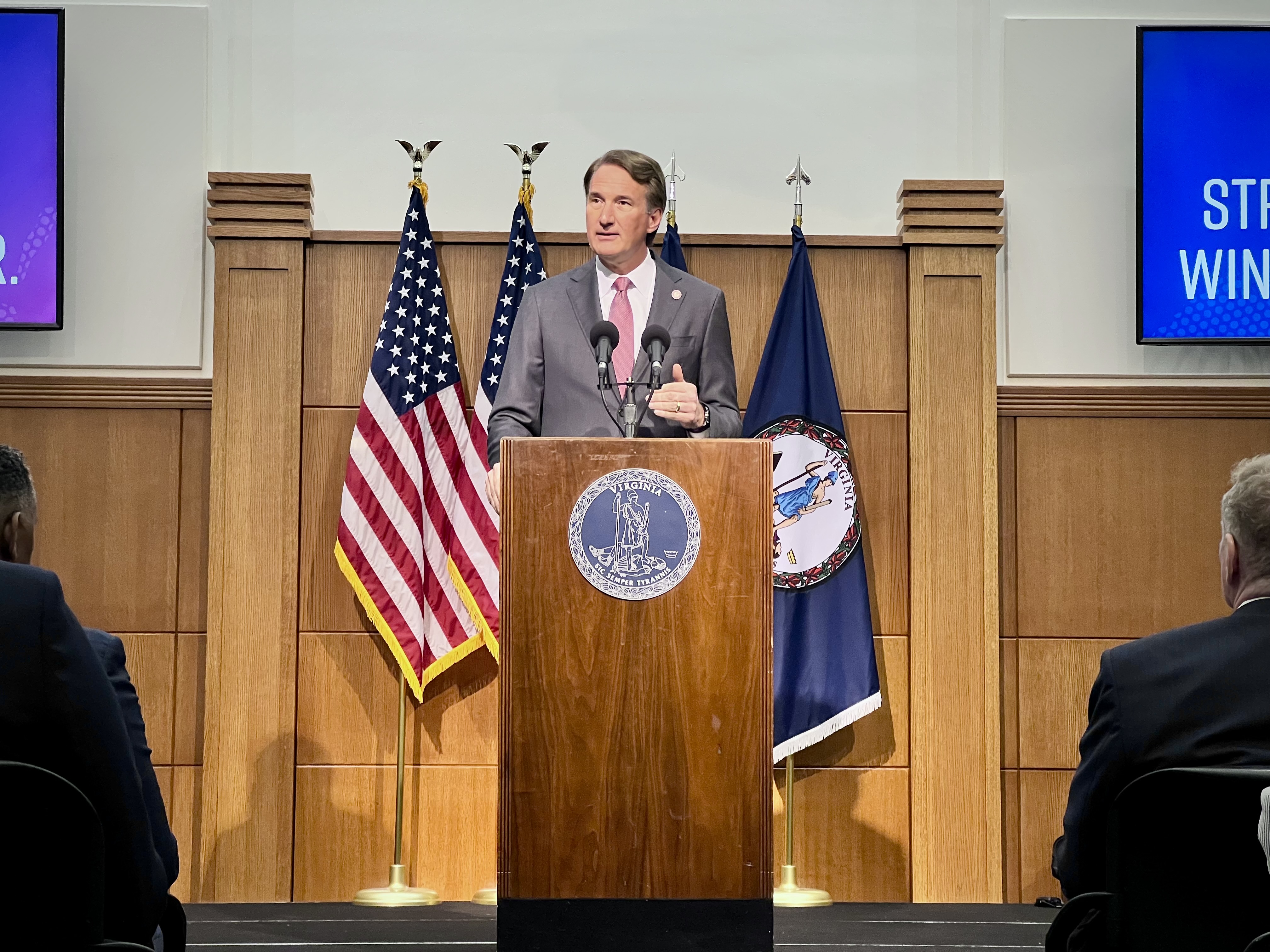
Much to the chagrin of Democrats, Youngkin has been a popular governor. He hasn’t been quite as popular as some Democratic governors have been, but in every Roanoke College poll since Youngkin took office, his approval rating has been at 50% or higher. In August 2024, Youngkin’s approval rating soared to 59%, with just 36% disapproving. No wonder Republicans want to run on his record. Virginians may despise the Republican president, but they have sure seemed to like their Republican governor.
Unfortunately for Republicans, this Roanoke College poll shows a shift. From 53% in February, Youngkin’s approval has fallen to 46% — the first time it’s under a majority. Meanwhile, his disapproval rate has jumped from 39% to 48%. Bottom line: 48% now disapprove of his handling of the job, 46% approve.
It’s unclear what has driven this change. Youngkin’s actions over the past few months don’t seem any different than what he’s been doing before now, but something has caused Virginians to think differently — not just about the governor, but whether the state is on the right track or wrong track. In the absence of any other evidence, it seems likely that Virginians’ feelings about Trump are the driving force. Put another way, Trump is now dragging down both himself and Youngkin. It’s hard to imagine worse news for Virginia Republicans.
4. Those Virginians most likely to vote still like Youngkin, though
Here’s where things start to look better for Republicans. Remember that the Roanoke College poll draws from registered voters, the Virginia FREE poll from likely voters. And while the wider pool of registered voters seems to be souring on Youngkin, the smaller pool of likely voters still thinks he’s doing a great job — 54% of those approve of the job he’s doing. That figure should give Republicans a lot more hope and cause Democrats some discomfort. All those people out there who don’t like Trump and now don’t like Youngkin don’t really matter if they don’t vote. That’s why the two polls appear to differ so widely. If we just focus on the likely voters, Trump isn’t as much of a drag for Republicans as he might seem to be. The danger for Republicans is that more of those voters who hate Trump but aren’t inclined to vote in the governor’s race suddenly get interested in doing so. More on that to come.
5. Spanberger leads, but the margin is very debatable
Roanoke College says registered voters favor Spanberger 43% to 26%, while that smaller universe of likely voters favors her 52% to 48%. There’s a big difference between a headline that screams “Spanberger leads by 17 percentage points” and another that says “Spanberger leads by 4 percentage points” or even “Race close, Spanberger lead just outside margin of error.”
So, which is right? They all are, which is why polls are so often misunderstood — and misinterpreted.
I’d rather err on the side of caution, so here’s how I’d frame things: While Spanberger may have a potential lead of 17 percentage points, she has a practical lead of 4 percentage points. While that may be outside the 3.1% margin of error in the Virginia FREE poll, it’s hardly a “safe” lead by any means. Terry McAuliffe led by 7 percentage points as late as mid-September 2021, and that didn’t work out so well for him. Democrats may yet win, and may even win big, but they shouldn’t delude themselves into thinking they’ve won yet.
The curious thing is that the Virginia FREE poll shows no undecided voters. How is that possible? Because the poll didn’t offer that as an option. That’s a polling technique to force respondents to make a choice, on the theory that many “undecided” voters really aren’t — they just don’t want to say yet who they’re supporting.
Virginia FREE’s crosstabs show that if you just look at those “likely” voters who are “definitely” supporting a candidate, Spanberger leads 31% to 23%, a lead of 8 percentage points. If you add in the “definitely” and “probably,” then Spanberger leads 43% to 38%, a lead of 5 percentage points. If you then add in the “leaners,” we get that 52% to 48% result, a lead of 4 percentage points.
In other words, Spanberger has a more solid core of support than Earle-Sears, but once those less-than-sure voters weigh in, the Democrat’s lead is cut in half. Come Election Day, we don’t count votes by intensity of support — the lukewarm vote counts just as much as the emphatic one. To me, this is a sign that Earle-Sears needs to shore up those voters leaning her way while Spanberger needs to expand the electorate and bring in people who right now aren’t inclined to vote.
Now let’s look even deeper into these polls. Sorry, Republicans, more bad news ahead.
6. Democrats appear more excited about this year’s election
While the Virginia FREE poll is more favorable for Republicans, or at least less favorable for Democrats, it does come with what the pollsters call “a potential warning sign for Republicans”: Democrats seem more interested in voting than Republicans are. The poll finds that 47% of Democrats say they have the highest interest level possible, while only 35% of Republicans do.
The bad news for Republicans: Their voters seem somewhat lethargic.
The better news for Republicans: Even with a lethargic base, their candidate is hanging close in the Virginia FREE poll. If Republicans can figure out how to juice up their own supporters, this might be a very different race.
That’s why I’d look for Republicans to raise a lot of issues designed to motivate their own supporters — issues that may not necessarily resonate with swing voters.
7. Neither candidate has fully excited their own party
Earle-Sears has a problem with her own party. According to the Roanoke College poll, 80% of Republicans have a favorable opinion of Trump and 77% have a favorable opinion of Youngkin, but only 60% have a favorable opinion of their party’s candidate for governor. If Republicans aren’t very excited going into the campaign, that’s part of the reason why. It’s unclear from the polling data what Earle-Sears needs to do to rev up Republicans, but whatever it is, she apparently hasn’t done it yet.
Meanwhile, Spanberger has a similar challenge with her party: 65% of Democrats have a favorable opinion of her, but 84% of Democrats have a favorable opinion of Sen. Mark Warner, the state’s senior Democratic senator. It’s unclear whether this is a case of Democrats simply not knowing Spanberger well enough yet or a consequence of her being positioned closer to the center than many other Democrats. (Example: All six candidates for the party’s nomination for lieutenant governor say they want to repeal the state’s “right-to-work” law that forbids unions from requiring dues from non-union members in the same workplace, but Spanberger says she doesn’t. See our Voter Guide for more about where they stand.)
All we can say for sure is that neither candidate is polling within their own party at the levels that other party leaders are. This problem seems to be more vexing for Earle-Sears, though. In the Roanoke College poll, 83% of Democrats say they’re prepared to vote for Spanberger, but only 70% of Republicans say the same about Earle-Sears. She’d be in a lot better shape if she could count on more unified support from her own party.
8. Independents are leaning Democratic this year
Virginia FREE finds that the independents who are likely to vote favor Spanberger 53% to 47%. Roanoke College, polling registered voters and not pushing undecideds toward a choice, says independents favor Spanberger 33% to 19%.
Either way, the advantage among independents belongs to Spanberger — and to Democrats generally.
It would appear to my eye that much of this might be Trump-driven. Only 28% of independents have a favorable opinion of Trump, the Roanoke College poll says, while 42% have a favorable opinion of Youngkin. However, when independents look at the gubernatorial candidates, only 26% have a favorable opinion of Earle-Sears, while 35% have a favorable opinion of Spanberger. Right now, independents rank Earle-Sears below even Trump and nowhere close to Youngkin. For her, that might be a reason to talk more about the current administration in Richmond but not the one in Washington.
9. Virginians aren’t in love with Spanberger yet, but they don’t like Earle-Sears
The Roanoke College poll found that, overall, 41% of those surveyed have a favorable opinion of Spanberger, 40% an unfavorable one. That’s statistically unchanged from the February survey, where voters split evenly about her.
However, the poll found that Virginians generally have a negative impression of Earle-Sears — and that negative impression is growing. In February, the poll found 34% had a favorable impression of her, 39% an unfavorable one. By May, the favorable side shrank slightly to 32%, but the unfavorable side jumped to 48%.
Here’s a broader way to think of that: Between February and March, Virginians’ impression of Trump, the state’s direction, Youngkin and Earle-Sears all changed for the worse. It seems unlikely to me that these are four separate trends but rather four examples of the same trend, one that doesn’t bode well for Republicans. The growing negative impression of Earle-Sears may not be a personal judgment, just a systematic one against all Republicans. That brings us to:
10. Virginians don‘t like either political party, but they dislike Republicans more than Democrats
The Roanoke College poll finds that 51% of registered voters have an unfavorable impression of the Democratic Party, while 63% have an unfavorable view of the Republican Party. As the 16th-century political analyst William Shakespeare once observed, “a plague on both your houses.”
It’s been four years since the Roanoke College poll asked this question. In 2021, 50% of those surveyed had an unfavorable impression of Republicans, so that change from 50% to 63% is a big one. Voters’ negative views of Democrats haven’t really changed, but their views of Republicans have become more disapproving. Four years ago, Trump was out of office, and Virginians were preparing to elect Youngkin. Since, until recently, they’ve had a favorable view of Youngkin, it seems likely that this increase in negative views about the Republican Party is more likely due to Trump than anything else.
The Virginia FREE poll had a different question that points to a similar result. It found that likely voters favor a generic Democratic candidate for the General Assembly over a generic Republican one by 53% to 47%.
One consolation for Republicans: That’s a statewide comparison involving generic labels, but that’s not how we elect legislators. This fall, all 100 seats in the House of Delegates will be on the ballot, but they will be specific candidates in specific districts. The vast majority of those are safely red or blue, depending on which part of the state you’re in. There are probably only about a half-dozen seats that are truly competitive, maybe a dozen under the most extreme scenarios. The overall political climate definitely matters, but come the fall, the question on the ballot isn’t a generic party label but real people with names and records: For instance, do voters in House District 41 in Montgomery and Republican counties prefer Republican Chris Obenshain or Democrat Lily Franklin?
11. The only politician Virginians like right now is Warner
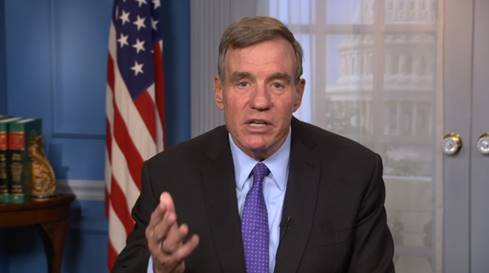
To be precise, the Roanoke College poll didn’t ask about every politician. But of the ones it asked about, the only one where a majority of respondents had a favorable opinion was Warner. Favorability is a slightly different question than job approval. In theory, you might have a favorable view of someone but still disapprove of their handling of the job. For instance, I have a favorable opinion of my cat Billy but still think he does a poor job of disposing of the mice he catches. (The bed is his preferred place to deposit a mouse carcass.)
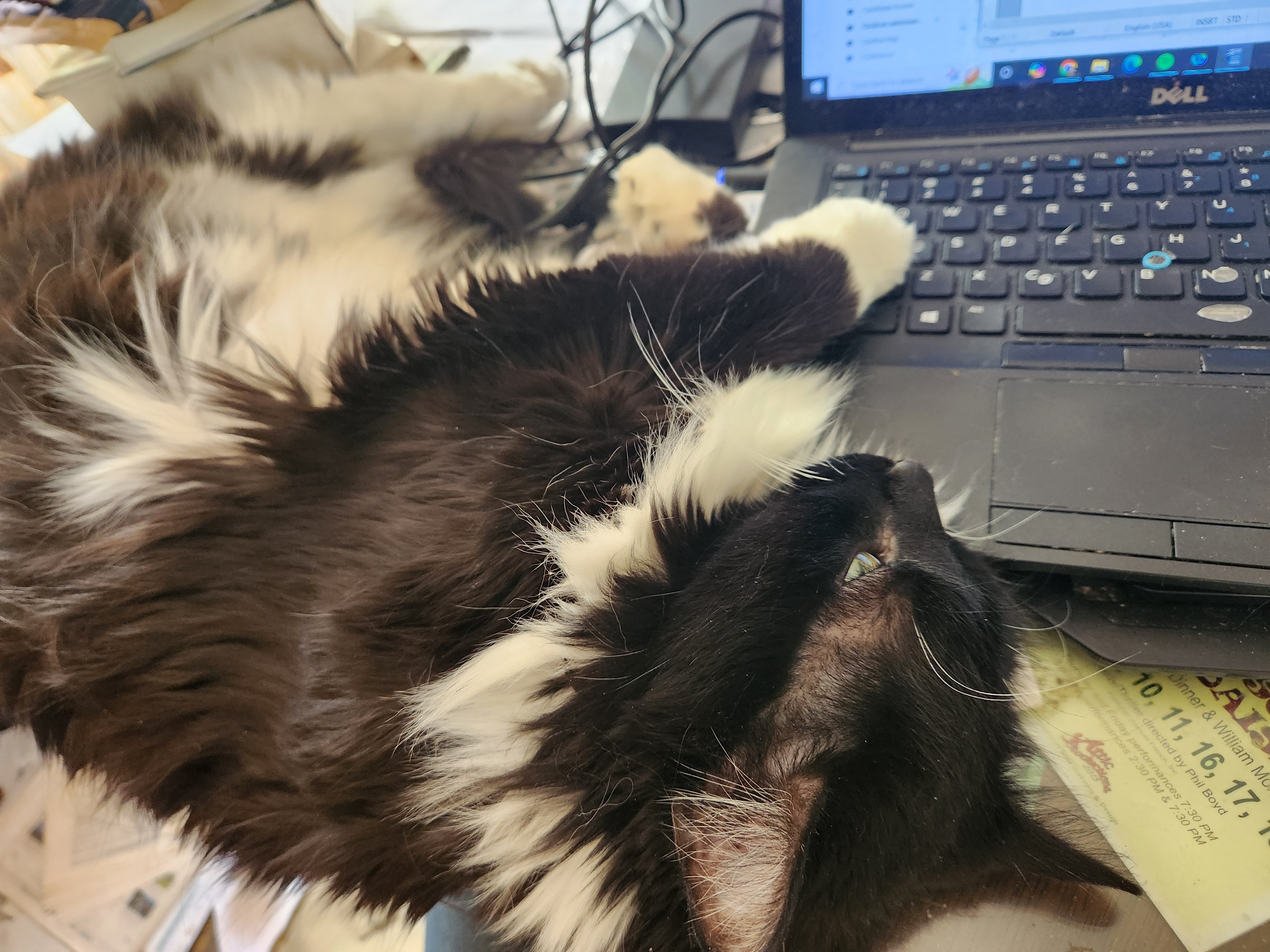
In the Roanoke College poll, Earle-Sears gets a favorable rating of 32%, Trump 33%, Spanberger 41%, Youngkin 44% and then Warner comes in at 51%.
The poll didn’t ask about Sen. Tim Kaine, D-Va., or any other specific figures, such as Republican Attorney General Jason Miyares, who is seeking reelection.
12. Here’s what all this means
Democrats will likely look at these numbers and be encouraged by the large lead among potential voters but concerned that Spanberger’s lead shrinks among those most likely to vote. They may also see how many people don’t like Trump and conclude that the way to motivate those non-voters to get interested in this year’s elections is to talk more about Trump.
Republicans will likely look at these numbers and think they need to do two things: They need Republicans to be more excited about their candidate, and they need to associate Earle-Sears more with Youngkin because he’s still pretty popular (even if his numbers have slipped). The latter is pretty straightforward; the former trickier. Those base Republicans love Trump, for instance, but it’s clear that independents don’t.
None of us really knows how this campaign will unfold in the coming months, but however it unfolds, these are the numbers that will be driving what the candidates do and say.
The Republican ticket for the fall is set, and the Democratic nomination for governor is set. The Democratic nominees for lieutenant governor and attorney general will be picked in a June 17 primary, for which early voting is already underway. Republicans have no statewide primary, but there are Republican primaries in some districts to pick House candidates or local candidates. You can look up who’s running for what and where they stand in our Voter Guide.
We also publish a weekly political newsletter, West of the Capital. This week, I’ll be looking at the latest early voting trends. You can sign up for that or any of our other newsletters below:



